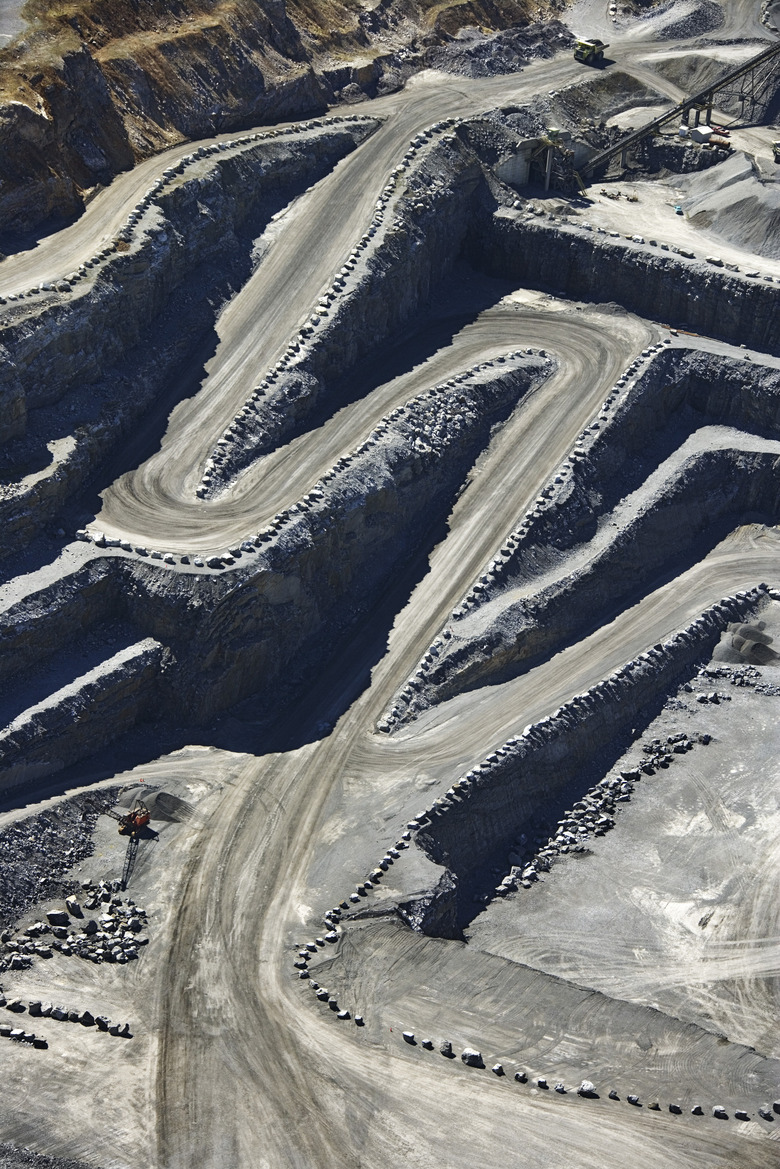Types Of Pollution Generated By Gold Mining
The high value of gold has made it a prime target of massive industrial mining operations designed to extract the mineral in the most efficient way possible. Heavy machinery, strip mining and acid extraction techniques give miners access to the valuable metal, but they can have significant side-effects. The gold mining and extraction industry creates a wide variety of pollution types, and if not regulated it can devastate any region that's home to veins of the sought-after ore.
Air Pollution
Air Pollution
Gold mines are usually large-scale operations, with heavy machinery and large vehicles required to dig and transport ore from place to place. These large vehicles produce emissions and greenhouse gases just like any other combustion engine-powered vehicle will, but usually on a larger scale and with much lower fuel efficiency. In addition, the earth-moving equipment that digs mine shafts or strips away topsoil can produce substantial amounts of dust and airborne particles that can further reduce the air quality around the mining operation. Airborne pollution from gold mining frequently contains heavy metals such as mercury, and as such is a potential health hazard for anyone exposed to it.
Soil Pollution
Soil Pollution
The soil pollution created by mining operations is another threat to wildlife and human health. Frequently, valuable ores run through rocks containing sulfides, and exposing this rock creates sulfuric acid. Washing these toxic byproducts away results in a semi-solid slurry called "tailings" that can contaminate the soil it comes in contact with. The acid leaching out of tailings can poison groundwater, and the toxic substances and heavy metals present in the leftover material can invade the topsoil and remain dangerous for years.
Water Pollution
Water Pollution
Gold mining also has the potential to contaminate any nearby water supplies. Acid washed out of mines frequently finds its way into the water table, altering the pH of nearby streams and rivers and threatening the survival of wildlife. If a tailings reservoir bursts, it can result in a toxic mudslide that can block the flow of waterways and wipe out any living thing it encounters. In addition, some small-scale mining operations practice illegal dumping of their toxic byproducts. One such case is the Minahasa Reya mine in Indonesia. In 2003, the corporation that ran the mine dumped 4 million tons of toxic tailings into Buyat Bay, enough to leave detectible residues in fish caught in the bay and cause swimmers and fishermen to suffer skin rashes.
Refining
Refining
Extracting the ore is not the only source of pollution in gold mining. Refining raw ore to remove impurities and concentrate the gold content usually involves caustic chemicals. One method involves dissolving the gold with a concentrated cyanide solution, allowing the resulting liquid to run away from the remaining ore and collecting it for reconstitution. The concentrations of cyanide used in this process are extremely dangerous, and if spilled into the environment, pose a significant threat to wildlife and human health.
References
- No Dirty Gold: Poisoned Waters
- University of Idaho: 1 Mercury Pollution at Gold Mining Sites in the Amazon Environment
- Environmental Protection Agency: Reducing Mercury Pollution from Artisanal and Small-Scale Gold Mining
- U.S. Geological Survey: The Summitville Mine and its Downstream Effects
- National Wildlife Federation: Hard Rock Mining Pollution
Cite This Article
MLA
Kazmeyer, Milton. "Types Of Pollution Generated By Gold Mining" sciencing.com, https://www.sciencing.com/types-pollution-generated-gold-mining-22598/. 24 April 2017.
APA
Kazmeyer, Milton. (2017, April 24). Types Of Pollution Generated By Gold Mining. sciencing.com. Retrieved from https://www.sciencing.com/types-pollution-generated-gold-mining-22598/
Chicago
Kazmeyer, Milton. Types Of Pollution Generated By Gold Mining last modified March 24, 2022. https://www.sciencing.com/types-pollution-generated-gold-mining-22598/
